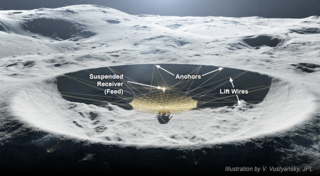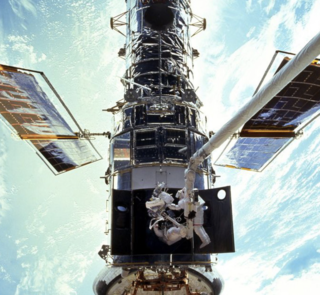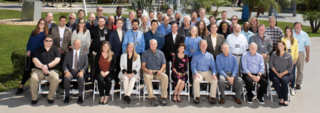Planning is underway at NASA for returning humans to the Moon, followed by human missions to Mars. Astronauts will again venture outside the protective shield of the Earth’s magnetosphere, this time for durations of months to years, where they will be vulnerable to long-term exposure from radiation and microgravity or low gravity environments.
This article is from the 2022 NESC Technical Update.
Planning is underway at NASA for returning humans to the Moon, followed by human missions to Mars. Astronauts will again venture outside the protective shield of the Earth’s magnetosphere, this time for durations of months to several years, where they will be vulnerable to long-term exposure from radiation and microgravity or low gravity environments. Keeping the astronauts safe and healthy during these long-term expeditions is an enormous challenge and so is the enormous price tag that comes with accomplishing such a grand feat. So what will keep such endeavors sustainable after the novelty of “been there” and “done that” wears off? The answer is simple: Science! Making groundbreaking discoveries spanning pure and applied sciences as a key part of Artemis goals provides a long-term sustaining rationale, beyond just exploration for its own sake. The success of the Hubble Space Telescope (HST) servicing missions to upgrade and repair the telescope to advance astrophysics is a shining example of what can be accomplished when NASA human exploration and science programs partner towards a common goal.
The Moon – A Platform for Science
Scientific exploration, whether of the Moon itself, or the use of the Moon as a platform for scientific studies, will play a great role in fueling sustainable human exploration. For example, since the beginning of the space age, the Moon has been proposed as a platform for astronomical observatories. With the NASA Artemis plan to return humans to the lunar surface in the mid-2020s, there is renewed interest in using the Moon as a unique location for scientific studies ranging from observing our solar system to studying the early universe before the first stars were born. Great opportunities lie ahead to advance ground-breaking science using the synergy between human and robotic scientific exploration. For this reason, a workshop, Unique Science from the Moon in the Artemis Era,1 bringing together stakeholders from science, engineering, technology, and human exploration communities was sponsored by the NESC in June 2022 to accomplish the following:
- Explore leveraging Artemis-era infrastructure to conduct unique science experiments and observations from the lunar surface and maximize return on investments,
- Advance synergistic approaches between human and scientific robotic exploration, and
- Identify/address key engineering challenges and risks.
Over 400 attendees participated in the hybrid workshop that was held at KSC and online. The workshop began by identifying unique and compelling astrophysics science studies that can only be accomplished from the surface of the Moon. Among the possibilities, the workshop focused on studies that NASA has already funded to robotically place a low-frequency radio telescope on the far side of the Moon2 to study the Dark Ages of the Universe (the epoch before the first stars were born) and radio emissions from the Sun and exoplanets orbiting nearby stars. One of these studies focused on placing a low-frequency radio telescope (Lunar Crater Radio Telescope3) inside a lunar crater. If built as proposed, it will be one of the largest radio telescopes in the solar system and would enable tremendous scientific discoveries in cosmology. While it is feasible that such a telescope could be assembled robotically, leveraging the Artemis infrastructure has the potential to be more efficient and cost effective.
Achieving Synergy Between Human and Robotic Exploration
A key element of the NESC workshop was to identify how the human exploration program can be leveraged to achieve ground-breaking science. There have been past successful examples of this, with the most spectacular being the Space Shuttle launch of the HST and subsequent servicing missions. More recently, this has been accomplished via science experiments attached to the ISS. For a future lunar base camp with science facilities, there are analogies with the Amundsen-Scott South Pole Station in Antarctica, which provides a hub for scientific activities, including telescopes to study the cosmic microwave background and neutrino experiments.
Exploiting the infrastructure provided by the human exploration program will have major benefits both in cost savings to the science program and its sustainability (e.g., via potential upgrades and repairs of facilities). As demonstrated by HST and the ISS, there is the potential for major groundbreaking science to be achieved when the human and science programs work together. Currently, science requirements are retrofitted to the capabilities of the early Artemis missions. This is understandable given that early missions are to demonstrate basic capabilities, but this limits the science return. Just as the later Apollo missions made science a driving goal with increased capabilities, the workshop concluded that we must be vigilant to ensure that science requirements are not afterthoughts for Artemis missions in the 2030s and 2040s. It is critical that architectural elements to enable ground breaking science be included in the Artemis requirements at an early stage of the Artemis Program.
A focus of the workshop was the synergy between human and robotic scientific exploration. The presence of humans on the lunar surface is an opportunity to deploy, repair, and upgrade any scientific instruments and observatories there. It is essential to optimize the role of robotics versus humans and to only use the latter where appropriate. A key feature is to ensure that telescopes that have been robotically landed and deployed, or those that have been manufactured in situ, are designed to be serviced. In a keynote speech, former astronaut John Grunsfeld discussed the lessons learned from HST and the ISS and made the compelling point that having standards (e.g., using the same bolt sizes and accessible connectors, and providing easy access) is crucial. This provides the ability to recover from unexpected events and failures, as well as upgrade existing facilities with new technology, ensuring sustainability.
Meeting the Engineering Challenges & Risks
Engineering challenges and risks associated with synergistic human and robotic exploration was another discussion focus of the workshop. While the lunar surface environment is challenging with dust contamination, large thermal swings, and extreme shadows at the lunar poles, and power generation and storage technologies will need to be developed, no showstoppers to using the Moon as a platform for science observatories were identified, but careful planning is needed. For example, adequate low-frequency radio frequency interference testing, screening, and shielding must be considered and standardized for all spacecraft and payloads that will be visible from the lunar radio quiet zone.
In summary, to ensure sustainability of the human exploration program and provide added return on investment, the workshop concluded that integration of science requirements into the Artemis Program at an early stage is a must. Otherwise, human exploration that does not include science as one of the primary objectives is a missed opportunity and is likely to result in the exploration program not being sustainable.
- https://www.nasa.gov/nesc/workshops/Unique-Science-from-the-Moon-in-the-Artemis-Era
- https://www.nasa.gov/directorates/spacetech/niac/2020_Phase_I_Phase_II/lunar_crater_radio_telescope/
- Observations of the radio band below 30 MHz cannot be made from the ground due to absorption from the Earth’s ionosphere. These observations can only be made from the far side of the Moon since the Moon acts as a physical shield that isolates the telescope from radio interference from sources on and around the Earth’s orbit.





























